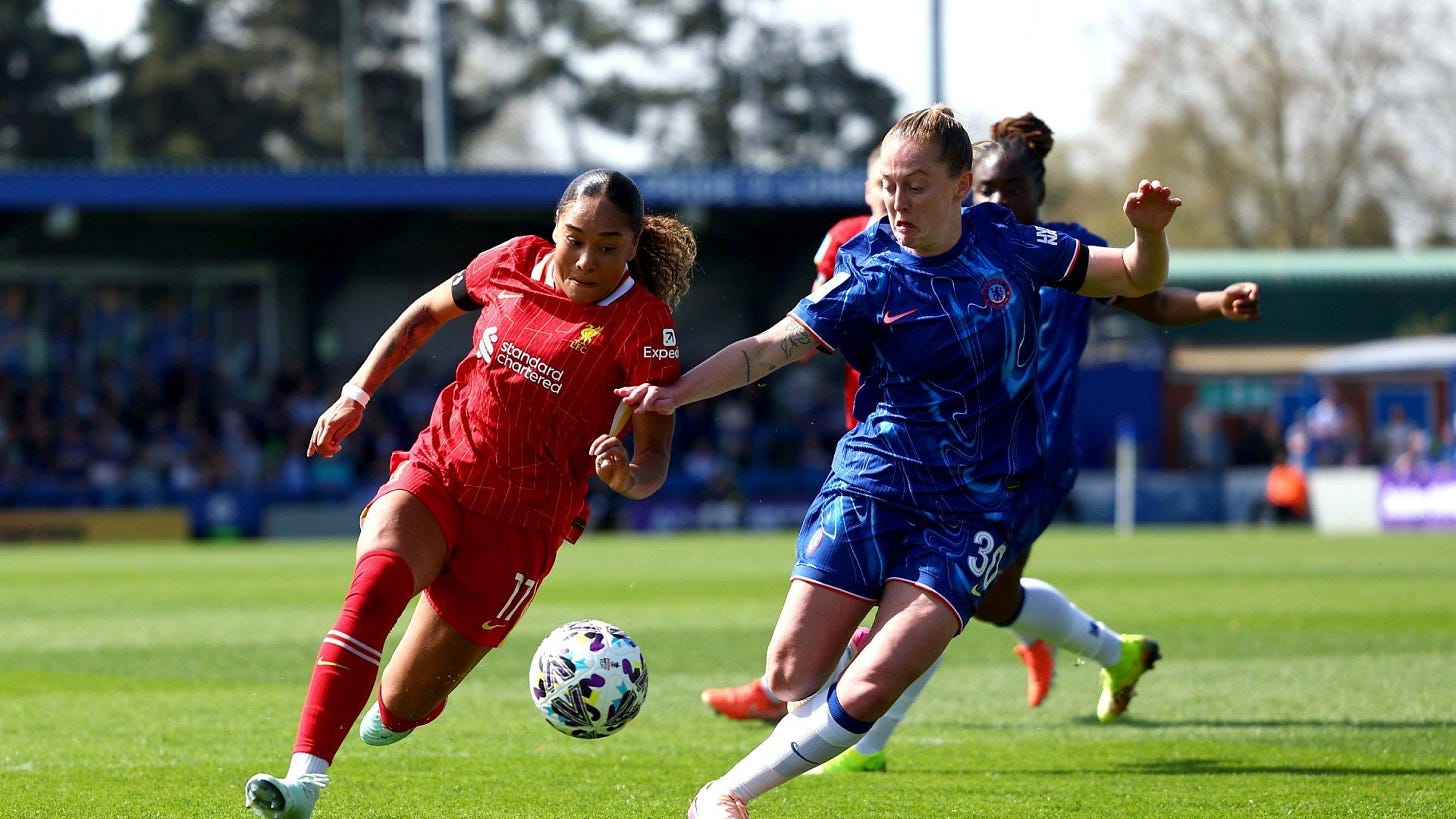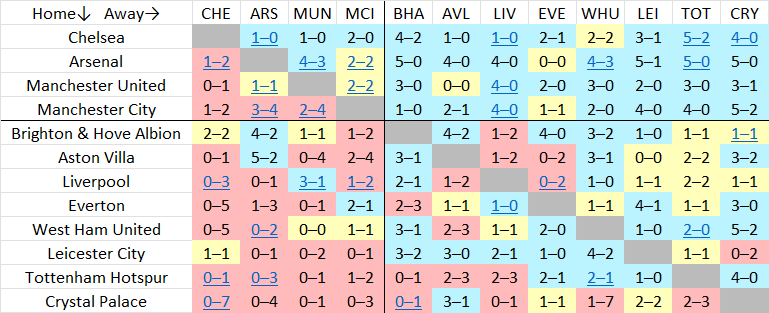The 2024/25 Women's Super League: A Review of the Stats
There's a close look at Liverpool, including why their 3-2 win at Tottenham was their most important result of the season.
Congratulations to Chelsea, Women’s Super League champions for the sixth season in a row. Sonia Bompastor’s side also became the first to go through a 22-game campaign unbeaten.
The Blues never looked in much danger of suffering a defeat. They trailed for a total of just 11 minutes at home, coming from behind to beat Everton 2-1. The closest they came to losing, at least by time, occurred at Leicester where they were 1-0 down until the 77th minute.
It was only having a game in hand across several match weeks early in the campaign that prevented Chelsea from topping the table from week two onwards (having only been behind on goal difference after the opening round of fixtures anyway). A 2-0 victory over leaders Manchester City in week eight took the Blues two points clear with a game in hand, which became five before the chasing pack played again. Job as good as done in late November.
But, wait. We look at more than the final score around here. The underlying data suggests a different team should have won the WSL: Arsenal. Mikel Arteta may be about to claim this proves his side have won another title.
The Gunners’ problem was that they dropped too many points early in the season when their performances deserved better results, at least by the measure of expected goals. Arsenal ‘won’ their first six matches on xG by an average of 1.0 and at least 0.6 every time, yet only collected nine points. Bye bye, Jonas Eidevall, bye bye, title.
In matchweek four they had four of the five highest value chances against Chelsea, losing 2-1 when the expected goals was 2.6-1.1 in their favour. With the Blues likely to win most weeks, title chances quickly evaporate through such outcomes.
Despite this, the Gunners comfortably outshot their xG by the widest margin in the division by far (scoring 14.1 goals more than expected). Being broadly neutral across the first 12 games then 14 goals up across the final 10 was too unbalanced for the final figure to be helpful.
It was only as their domestic campaign spluttered to a halt that Arsenal suffered a couple of surprise defeats, with new manager Renée Slegers wisely focussing on the Champions League. As has been discussed on this newsletter before, there were too few unexpected results in the 2024/25 WSL.
The bookmakers’ odds will tell you that 24 matches were won by the underdog, a decent chunk of a 132 game campaign. However, the top four teams in the table were collectively involved in just five upsets, one of which was Manchester United winning 4-2 at their City rivals from across town.
The results grid emphasises the point. The bottom eight clubs earned just four points from their 32 away matches against the leading sides. Before Arsenal’s defeats on the road late in the season, the top four lost just twice away to the rest of the pack.
Beating Manchester United in front of almost 16,000 fans at Anfield was the highlight of a difficult campaign for Liverpool. Yet they defeated them twice last season; while not everything should be measured in terms of progress ahead of enjoyment, the Reds took steps backwards in 2024/25. Here’s their WSL history, via FBRef, to illustrate the point.
Notice how Liverpool’s goal difference is identical this season as in 2022/23, with one draw traded for a win to give them two points more this time around. They finished seventh in both campaigns regardless, when last season had felt like serious progress for the football club.
Performance against corresponding fixtures from the previous campaign is fully apparent in the league table at the end of the current season. It’s worth looking below the surface with Liverpool’s figures, seeing as everything they gained last season was washed away.
Matt Beard (later Amber Whiteley)’s side were unlikely to repeat their most eye-catching results from 2023/24. A 4-3 home win over Chelsea became a 3-0 loss, for instance.
They also dropped five points on last season at home to Aston Villa and Leicester, though. Worse was to come on the road, not just in getting thumped 4-0 at the Emirates having won their season opener there in 2023.
Three of Liverpool’s four away wins were fixtures they had won in the preceding season, so it was reasonable to expect them to do so once more. This means the 3-2 win at Tottenham was the only fixture in which the Reds improved their result on 2023/24. It wasn’t just that they got worse overall, there was barely any sign of progress in any given game.
That’s not strictly true. Look at the above table again. Liverpool’s goal difference fell by 23 while their underlying process narrowly improved. West Ham had the near opposite outcome, with a metric many analysts might consider old hat providing at least some of the explanation.
The humble Opta-defined big chance reveals all. Liverpool had the worst conversion rate in the WSL this season, scoring with just 10 of their 32 (31.3 per cent). Only Aston Villa (59.4) were more proficient at tucking away these high value opportunities than the Hammers (48.8).
Despite the division collectively outscoring xG by 48 goals in 2024/25, the Reds were the only club who underachieved once own goals were factored in. That’s a remarkable state of affairs.
Like any metric, looking at differences between regular and post-shot xG can’t explain everything. If it did, Spurs would’ve had a much better campaign.
But a Liverpool side which already struggled to create chances then shaved 5.1 off their expected goal value with poor finishing. Brighton and Aston Villa both overtook the Reds after last season, with this likely one reason why.
Thank goodness, then, for Olivia Smith (who was +2.4 against her xG despite suffering the most fouls per 90 in the WSL) and Sophie Román Haug (+1.5), as aside from Fuka Nagano scoring once from 0.9 expected goals-worth of chances, nobody in the squad hit par. A shout too for Marie Höbinger, as the Reds’ xG difference was 1.41 per 90 better with her on the pitch, the third best rate of anyone in the division.
There’s every chance that in 12 months time we will be looking back at another Women’s Super League-winning campaign for Chelsea. While Liverpool can’t yet close that gap entirely, they need to make a start on doing so in 2025/26.







